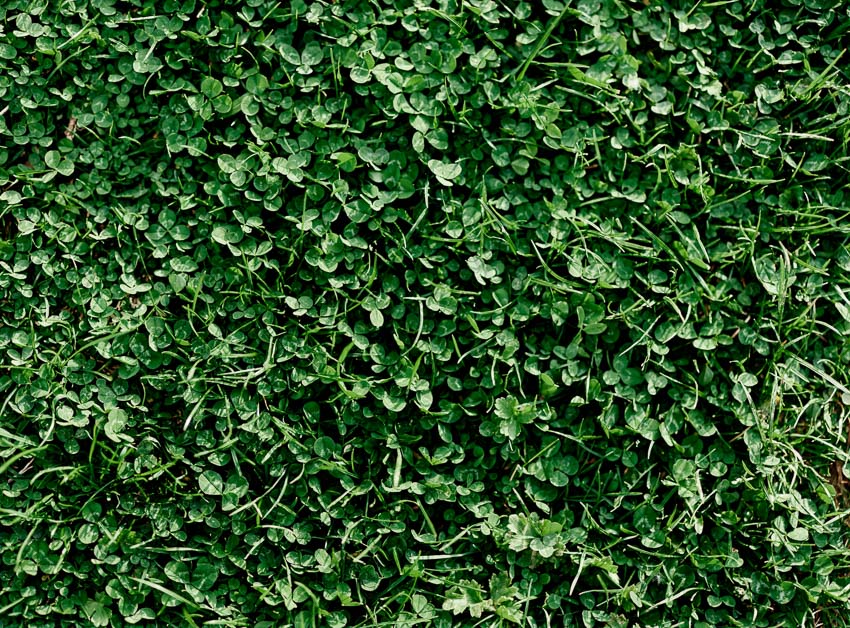You don’t have to be superstitious to love microclover and appreciate its charm. Everyone is familiar with clover, but what is microclover, and why is everyone falling in love with it? Discover the important advantages of growing microclover and see how quickly it can transform the look and feel of your yard.
Introducing Microclover: Characteristics and Benefits
Clover and grass grew together in lawns until the invention of broadleaf herbicides in the 1950s. Today, many lawn and garden enthusiasts see clover as a weed, despite its many advantages over grass.
The sweet fragrance and dainty leaves of microclover may give you the impression that it is tender and frail, but don’t be fooled. It is surprisingly resilient and will stay green all summer, even when everyone’s grass is turning brown.
Understanding the Basics of Microclover
There are over 250 clover species; the shortest is Dutch white clover (Trifolium repens). Microclover cultivars are a subspecies of white clover, and they are even shorter, making them a favorite choice as a groundcover.
It was developed to stay green all year, and its vigorous growth blocks out tough weeds like dandelions. DLF Pickseed conventionally bred it in Denmark and Sweden to use in sports field applications. Today, the two most popular cultivars of microclover are ‘Pirouette’ and ‘Pipolina.’
One of the most remarkable things about microclover is that you can mow it incredibly short. When grass grows alone, it won’t shade its own roots unless it’s 3 to 4 inches tall. But the leaves of microclover act like tiny sun umbrellas, allowing you to cut your lawn as low as a half inch, according to the company that developed it.
Some people call microclover green clover, not just because the foliage is such a bright green color but because it has almost no flowers, which is one of the biggest complaints about Dutch white clover. Fewer flowers mean fewer seeds, making it less invasive than Dutch white clover.
Advantages as a Groundcover
Microclover and grass do well together. Originally, microclover was supposed to be 2 to 5% of lawn seed mix. Many people have started growing it as a monoculture, with lawns planted with pure microclover.
Grass and clover grow together quite well, however. Grass helps support the tender leaves of clover and makes them more resistant to foot traffic, while the clover spoon feeds nitrogen that it absorbs from the atmosphere to the grass.
Less Maintenance Required
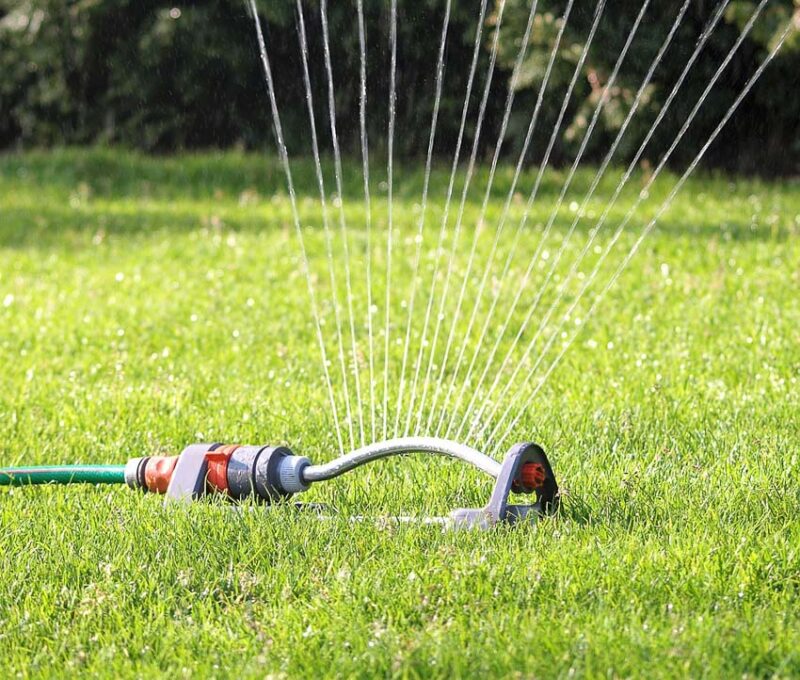
Microclover lawns require much less water than traditional lawns, so they are a good choice for areas experiencing water shortages. The leaves of the microclover plants help shade the ground and keep it cool so there is less evaporation.
Microclover requires less mowing than conventional lawns. If you like to keep your lawn neatly trimmed, you may still need to mow it every week, but if you plant a monoculture of microclover and don’t mind a little bit of unevenness, you would never need to mow it.
You can eliminate fertilizer and herbicide use when switching to microclover and grass lawns. The nitrogen-fixing that the clover does will take care of the fertilizer needs of the grass, and you can’t use broadleaf herbicides on a clover lawn. The deep roots of microclover also eliminate the need for lawn aeration.
Competes With Weeds and Stops Soil Erosion
Once established, microclover is aggressive enough to crowd out other weeds, including dandelions, crabgrass, and plantain. Another benefit of microclover is that its deep roots better protect your soil from erosion than grass lawns. The leaves protect the surface and help with splash erosion from raindrop impacts during heavy rains.
Other Benefits
Many people choose microclover because it produces fewer flowers than white clover. If you are allergic to bees or have small children running barefoot, microclover is the better choice.
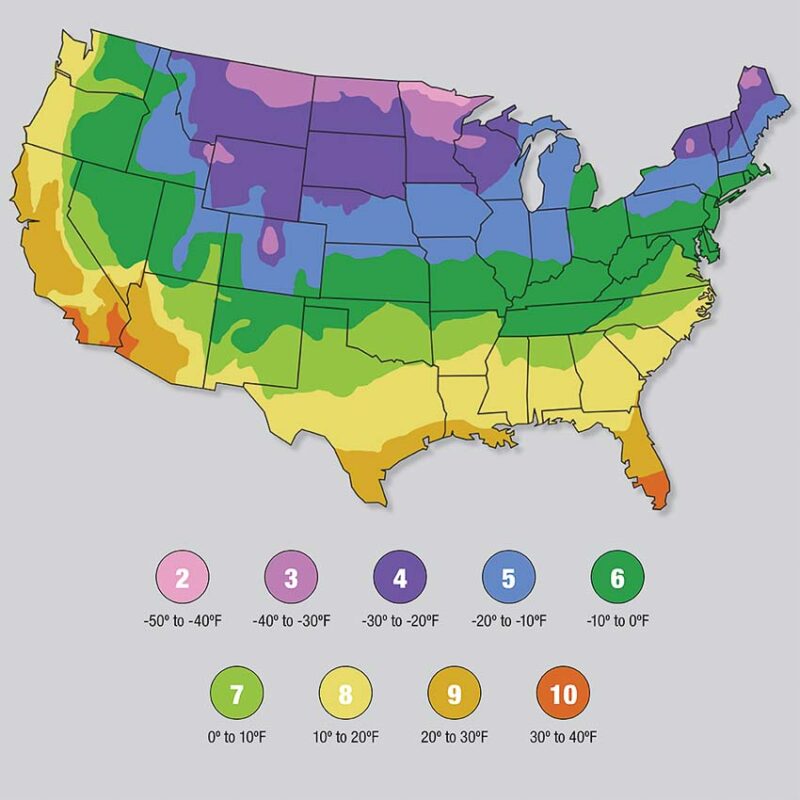
Microclover is a hardy grass substitute, and people who grow it appreciate its resilience. Microclover is more resistant to pet urine than grass, making it an excellent choice if you have dogs.
Hardy to Zone 3 , you can grow microclover in most parts of the world. It will attract wildlife because of its high protein content, but pests like lawn grubs don’t affect it.
How to Plant Microclover: Step-by-Step Guide
Microclover is easy to grow, especially with these soil preparation tips and planting techniques. Learn how and when to plant it with these tips and techniques.
Soil Preparation for Planting Microclover
When planting microclover, the first step is deciding whether you want a mixed or pure microclover lawn.
How to Plant a Mixed Lawn
If you already have a grass lawn that’s in decent condition, you can overseed your grass with microclover to develop a healthy mixed lawn. It’s much less work because you don’t have to tear out your entire lawn.
Start by dethatching your lawn. You can hire a professional, rent a dethatching machine, or DIY it with a thatching rake. Removing the thatch will thin your grass and allow the clover seed to germinate.
Next, overseed your lawn with microclover. Use about 20% of the recommended amount of seed. Usually, one pound covers about 1,000 square feet, so you can cover 5,000 square feet when you’re overseeding.
How to Plant a Monoculture
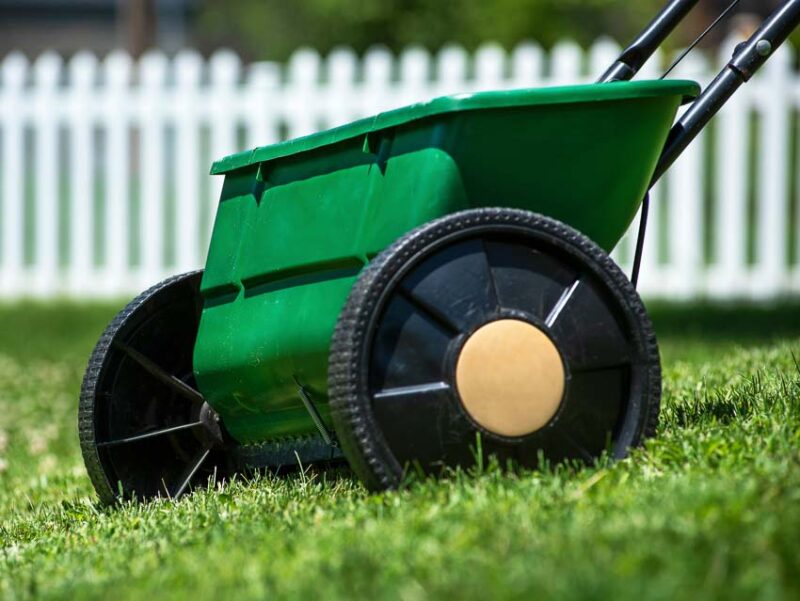
To plant a pure microclover lawn, you need to remove the existing grass. Till the soil to a depth of 4 to 8 inches and rake it smooth. Its seed is tiny, so it comes as pellets for easier application.
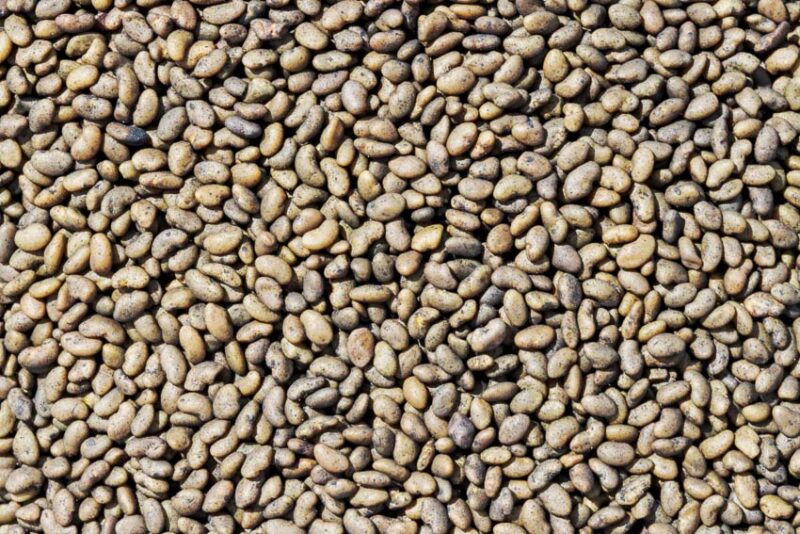
The best time to plant it is in the spring and fall, when soil temperatures are cool and more precipitation is likely. Use a broadcast spreader to apply it at the rate of one pound per 1,000 square feet. Water it lightly and keep the soil moist for the first few weeks.
Planting Techniques and Best Practices
You don’t need to fertilize clover; it will compete against weeds better if you don’t fertilize it. You can plant it much earlier in the spring than grass because it germinates at cooler temperatures, between 38° to 42°F (3° to 6°C). Save a little bit of seed so you can fill in gaps after your lawn germinates.
Microclover vs. Other Types of Clover: A Comparison
Since microclover is a subspecies of Dutch white clover, they share more similarities than differences. It was developed for specific characteristics that set it apart from other types of clover.
Microclover vs. White Clover: Similarities and Differences
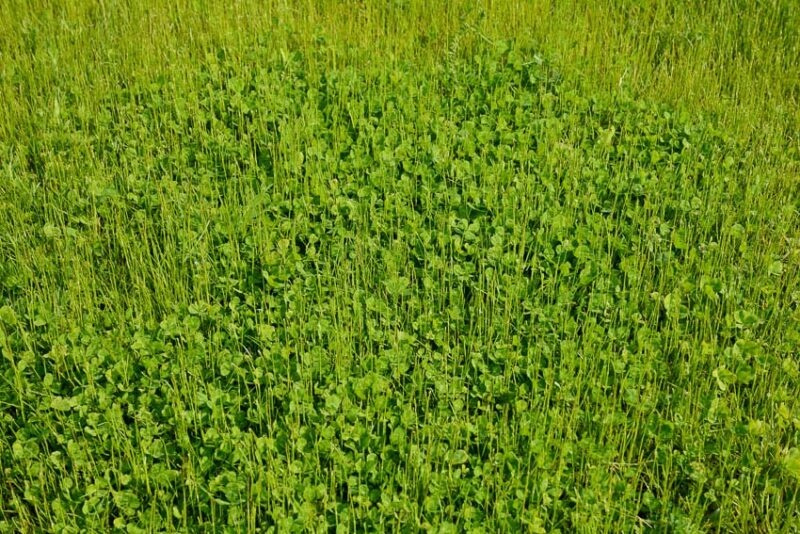
There’s a lot to consider when deciding between white clover vs. microclover. The biggest difference is the size. The microclover plant doesn’t get as tall and has much smaller leaves. It’s a dwarf version of white clover, reaching a maximum height of about 5 to 6 inches compared to 8 to 10 inches with white clover.
Microclover does not flower nearly as much as Dutch white clover, which is good news for people with pollen and bee allergies. If you want to attract beneficial pollinators or grow clover for honey, Dutch white clover is the better choice.
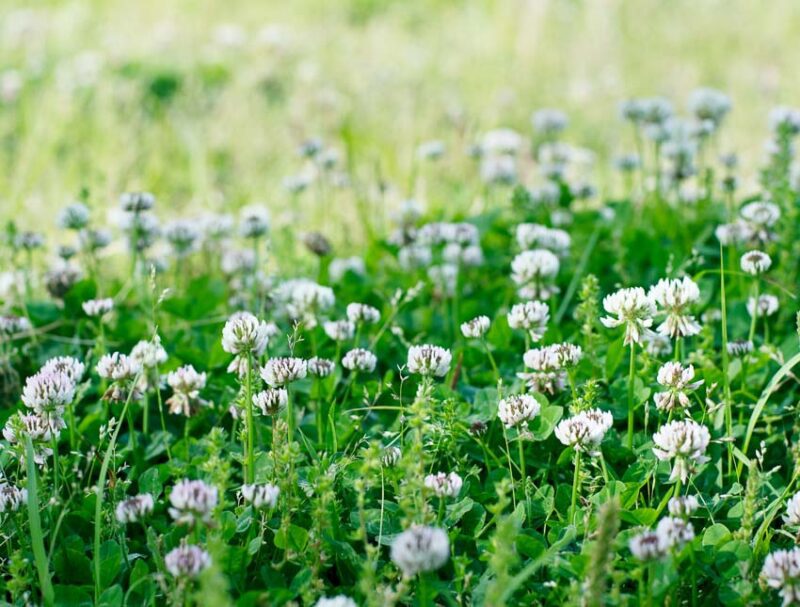
Both types of clover compete aggressively with weeds, usually crowding out even tough weeds like dandelions and crabgrass. Microclover is a tough plant, but it doesn’t tolerate heavy foot traffic, so you should use pavers and stepping stones in high-traffic areas.
Microclover and Dutch white clover are deep-rooted nitrogen-fixing plants that benefit your soil and make your lawn greener. They both tolerate pet urine remarkably well and are a great choice for pet yards.
Microclover vs. Traditional Lawn Grass: Pros and Cons
Microclover and grass grow really well together, but some people prefer the look of a grass lawn. It’s softer than grass, but how you use your lawn will help determine what’s best for your yard.
A microclover yard isn’t as tolerant to foot traffic as grass, but a monoculture is a great idea if your lawn is mostly ornamental.
Is Microclover Invasive? Addressing Concerns
Very few species of clover are native to North America, and there are valid concerns about the invasiveness of non-native plants and wildlife.
Understanding the Growth and Spreading Habits
Invasive species are plants, animals, and other organisms that aren’t native to their growing environment. They often outcompete native species and upset the delicate balance of ecosystems, which puts wildlife at risk and can lead to the degradation of waterways.
Clover arrived in America with European settlers. The Pennsylvania Dutch grew white clover as a forage crop because it is high in protein, and by the mid-1700s, it was well-established as an invasive species.
Microclover spreads aggressively by stolons or runners, which grow out from the sides of the plant and run along the ground, forming new plants wherever nodes touch the ground and take root. For this reason, it can be hard to contain.
Controlling Growth and Preventing Invasiveness
Clover species have naturalized in many parts of the United States, and people often treat clover as a weed. Most of the species of lawn grasses grown in the U.S. are also non-native species, and while some biologists don’t recommend planting clover, you’re rather limited in your choices for native lawn species.
Clover is a good option for lawns as long as you control its growth to prevent invasiveness. Mowing your microclover lawn encourages spreading and tight, compact growth, which improves the appearance of your lawn, but it also prevents seed heads from developing.
You can use broadleaf herbicides or organic herbicides to control the spread of clover that is outside your lawn area.
If you let your mixed lawn get tall, microclover is less likely to germinate, but it will go to seed and can spread to other locations. Lawn tall and thick grass doesn’t allow new seeds to germinate, but it could spread to your neighbor’s lawn.
Hunters and farmers use clover for forage and hunting crops, and if that’s something you’re interested in, it’s important to understand that it is invasive. People are most likely to use it as a forage or hunting plot crop than Dutch white clover, mostly because it’s far more expensive and doesn’t get as big.
FAQ: Addressing Common Questions about Microclover
Q1: Can Microclover Be Used in High-Traffic Areas?
One of the main disadvantages is that it doesn’t tolerate heavy traffic. However, it’s less likely to be affected by foot traffic when planted with grass.
Q2: Does It Require Special Maintenance?
It doesn’t require special maintenance. It’s actually easier to care for than grass lawns. It doesn’t grow as tall, so it doesn’t need to be mowed as much if you plant it alone. Microclover also requires less frequent watering, and in some areas, people don’t water it at all.
Q3: Can Microclover Thrive in Different Soil Types?
All types of clover tolerate a wide range of soil types, including microclover. Heavily compacted clay soils can benefit from planting it with grass because the clover roots help aerate and loosen the soil.
You can even grow microclover on sandy soils, but moisture may be an issue during the hottest parts of the summer.
Q4: Can Microclover Be Used in Shady Areas?
Microclover doesn’t grow well in heavy shade. It will tolerate partial shade, but it prefers full sun. If you have a shady area where you want to grow microclover, prune the trees and shrubs to let in more light. You can also switch to regular white clover in shady areas because it tolerates more shade than microclover.
Q5: Does Microclover Attract Bees and Other Pollinators?
Microclover has fewer flowers than Dutch white clover, which are considerably smaller, attracting fewer pollinators. Many people choose microclover for this reason, especially if they are allergic to bees or have small children that run around on the lawn with bare feet.

